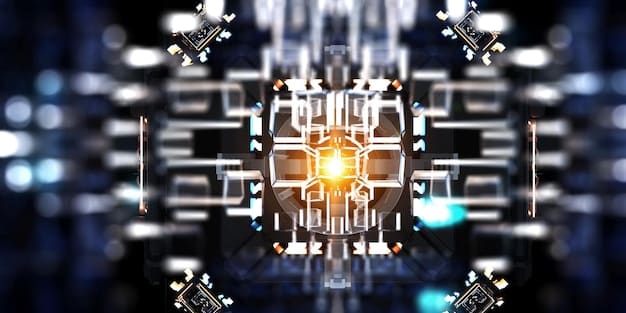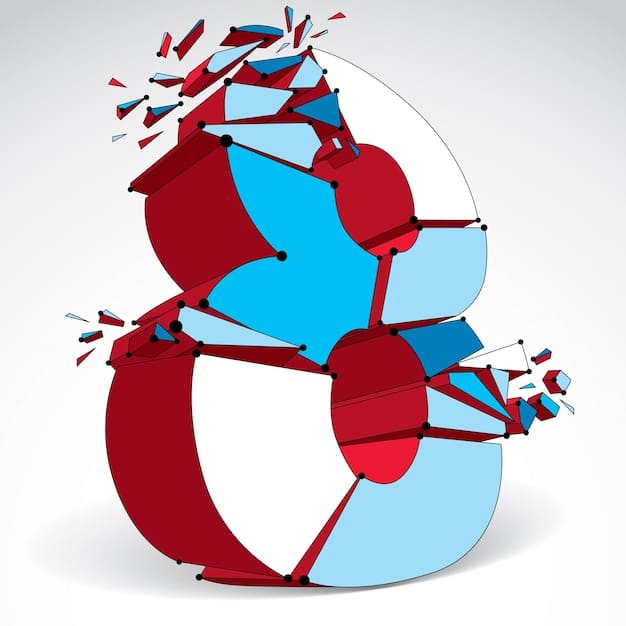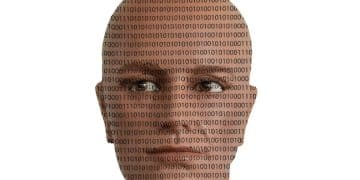Quantum Computing: Will It Break Encryption Standards Soon?

Quantum computing holds the potential to revolutionize various fields, but concerns arise regarding its ability to break current encryption standards; experts estimate this could happen within the next decade, urging the development and implementation of quantum-resistant cryptography.
The advent of quantum computing has sparked both excitement and apprehension. While the technology promises groundbreaking advancements, a significant concern revolves around when will quantum computers be powerful enough to break current encryption standards? This article delves into the timeline, potential impact, and necessary countermeasures.
Understanding Quantum Computing and Its Potential
Quantum computing represents a paradigm shift from classical computing. Instead of bits that are either 0 or 1, quantum computers use qubits, which can exist in a superposition, representing 0, 1, or both simultaneously. This allows quantum computers to perform certain calculations exponentially faster than classical computers.
The potential applications of quantum computing are vast, spanning drug discovery, materials science, financial modeling, and artificial intelligence. However, this immense power also poses a threat to current cryptographic systems that protect sensitive data.

The Basics of Quantum Computing
Quantum computers leverage quantum mechanical phenomena such as superposition and entanglement to perform complex calculations. Superposition allows qubits to exist in multiple states at once, while entanglement links two qubits together, enabling correlated operations.
- Superposition: A qubit can represent 0, 1, or a combination of both, unlike classical bits.
- Entanglement: Two or more qubits become linked, and the state of one instantly influences the state of the other, regardless of the distance between them.
- Quantum Algorithms: Algorithms designed to exploit quantum mechanical properties for computation, such as Shor’s algorithm and Grover’s algorithm.
These capabilities allow quantum computers to tackle problems that are intractable for classical computers, opening up new possibilities for scientific discovery and technological innovation.
In summary, quantum computing’s unique capabilities stem from its use of qubits and quantum mechanical phenomena, which enable it to perform complex calculations far beyond the reach of classical computers, unlocking potential across various fields.
The Threat to Current Encryption Standards
Current encryption standards, such as RSA and ECC (Elliptic Curve Cryptography), rely on the computational difficulty of certain mathematical problems, like factoring large numbers or solving discrete logarithms. Classical computers would take an impractically long time to solve these problems, ensuring data security.
However, quantum computers, armed with algorithms like Shor’s algorithm, can efficiently solve these problems, potentially rendering current encryption standards obsolete. This poses a significant risk to data security, including financial transactions, government communications, and personal data.
The implication is that sensitive information, currently protected by these standards, could be decrypted by a sufficiently powerful quantum computer, necessitating the adoption of quantum-resistant cryptographic methods.
Shor’s Algorithm: A Game-Changer
Shor’s algorithm, developed by mathematician Peter Shor, is a quantum algorithm that can factor large numbers exponentially faster than the best-known classical algorithms. This capability directly threatens the security of RSA encryption, which relies on the difficulty of factoring large numbers.
Shor’s algorithm efficiently solves mathematical problems that are traditionally challenging for classical computers, posing a substantial risk to current encryption systems.
Consequently, the potential deployment of quantum computers equipped with Shor’s algorithm motivates proactive measures to fortify cryptographic defenses against quantum attacks.
Timeline for Quantum Computer Development
Predicting the exact timeline for when quantum computers will be powerful enough to break current encryption standards is challenging, as it depends on various factors, including advancements in quantum hardware, error correction, and algorithm development.
However, experts estimate that a sufficiently powerful quantum computer could be available within the next decade. Some believe it could happen sooner, while others are more conservative. This uncertainty underscores the urgency of preparing for the quantum threat.

Key Milestones and Predictions
Significant milestones in quantum computing development include increasing the number of qubits, reducing error rates, and improving qubit coherence times. Several organizations, including Google, IBM, and academic institutions, are actively working on these challenges.
- Qubit Count: Increasing the number of qubits is crucial for tackling complex problems.
- Error Correction: Quantum computers are prone to errors due to their sensitivity to the environment; error correction techniques are essential for reliable computation.
- Algorithm Development: Developing new quantum algorithms and optimizing existing ones is necessary to fully exploit the potential of quantum computers.
Experts suggest the “quantum threat” could materialize in the mid-2030s. However, the development of quantum-resistant cryptography is a complex and time-consuming process, highlighting the need for immediate action.
In conclusion, the ongoing progress in quantum computing hardware, error correction, and algorithm development suggests that the threat to current encryption standards is imminent, necessitating proactive preparation and the adoption of quantum-resistant cryptography.
Quantum-Resistant Cryptography: The Defense Strategy
Quantum-resistant cryptography, also known as post-quantum cryptography (PQC), involves developing cryptographic algorithms resistant to attacks by both classical and quantum computers. The goal is to replace current encryption standards with PQC algorithms before quantum computers become a significant threat.
Several PQC algorithms are being researched, including lattice-based cryptography, code-based cryptography, multivariate cryptography, hash-based cryptography, and supersingular isogeny Diffie-Hellman (SIDH). These algorithms rely on different mathematical problems that are believed to be hard for both classical and quantum computers.
Implementing quantum-resistant cryptography is crucial to maintaining data security in the face of quantum computing advancements, ensuring that sensitive information remains protected against future decryption attempts.
The NIST PQC Standardization Process
The National Institute of Standards and Technology (NIST) is leading a global effort to standardize PQC algorithms. In 2016, NIST initiated a process to solicit, evaluate, and standardize one or more quantum-resistant public-key cryptographic algorithms.
The standardization process is designed to identify robust and reliable PQC algorithms that can be widely adopted. Final standards are expected to be released in the coming years, paving the way for widespread deployment of PQC.
NIST’s efforts in standardizing PQC algorithms are essential for establishing a framework for secure communication in the quantum era.
Challenges and Considerations
Transitioning to quantum-resistant cryptography presents several challenges. One of the main challenges is the performance overhead of PQC algorithms. Some PQC algorithms are computationally more intensive than current encryption standards, which could impact the performance of applications and systems.
Another consideration is the compatibility of PQC algorithms with existing infrastructure and protocols. Implementing PQC may require significant changes to software, hardware, and communication protocols, which could be costly and time-consuming.
Furthermore, the long-term security of PQC algorithms needs to be continuously evaluated. As quantum computers evolve, new attacks may be discovered, requiring ongoing research and development to ensure the continued security of PQC algorithms.
- Performance Overhead: PQC algorithms may be more computationally intensive, impacting application performance.
- Compatibility: Implementing PQC may require significant changes to existing infrastructure and protocols.
- Long-Term Security: Continuous evaluation and research are needed to ensure the ongoing security of PQC algorithms.
Overcoming these challenges requires careful planning, collaboration, and investment in research and development to ensure a smooth and secure transition to quantum-resistant cryptography.
In essence, while PQC offers a promising solution, the transition poses significant challenges, including performance overhead, compatibility issues, and the need for ongoing security evaluations. Addressing these challenges requires careful planning and collaborative efforts to ensure a seamless and secure transition.
Steps to Prepare for Quantum Computing Threats
Organizations and individuals can take several steps to prepare for the quantum computing threat. One of the first steps is to assess the risk and identify the data and systems that are most vulnerable to quantum attacks. This includes understanding the current encryption standards used and the potential impact of a quantum break.
Another important step is to stay informed about the latest developments in PQC and the NIST standardization process. This will help organizations make informed decisions about when and how to implement PQC algorithms.
Finally, organizations should begin testing and piloting PQC algorithms in non-critical systems to gain experience and identify potential issues before deploying PQC in mission-critical applications.
Practical Measures for Businesses
Businesses can take practical measures to prepare for the quantum computing threat, including conducting a cryptographic inventory to identify the encryption algorithms used in their systems, prioritizing the protection of sensitive data, and engaging with cybersecurity experts to develop a quantum risk management strategy.
These measures collectively enhance a business’s preparedness and resilience against potential quantum computing threats.
| Key Point | Brief Description |
|---|---|
| 🔑 Encryption Threat | Quantum computers pose a risk to current encryption standards like RSA and ECC. |
| 🛡️ Defense Strategy | Quantum-Resistant Cryptography (PQC) is being developed to counter quantum computer attacks. |
| ⏱️ Timeline | Experts estimate quantum computers could break encryption within the next decade. |
| 🌐 NIST Standards | NIST is standardizing PQC algorithms for widespread adoption and enhanced security. |
FAQ
▼
Quantum computing uses quantum-mechanical phenomena like superposition and entanglement to perform calculations. Unlike classical computers that use bits (0s and 1s), quantum computers use qubits, which can represent 0, 1, or both simultaneously, enabling faster processing for certain tasks.
▼
Quantum computers, leveraging Shor’s algorithm, can efficiently solve mathematical problems that are computationally difficult for classical computers. This capability threatens the security of current encryption standards like RSA and ECC, potentially exposing sensitive data.
▼
Quantum-resistant cryptography (PQC) involves developing cryptographic algorithms that are resistant to attacks by both classical and quantum computers. These algorithms aim to replace current encryption standards with methods that are secure in the quantum era.
▼
The National Institute of Standards and Technology (NIST) is leading a global effort to standardize PQC algorithms. NIST initiated a process to solicit, evaluate, and standardize quantum-resistant public-key cryptographic algorithms for wide adoption.
▼
Organizations can prepare by assessing their risk, staying informed about PQC developments, conducting cryptographic inventories, and prioritizing sensitive data protection. Engaging with cybersecurity experts and pilot-testing PQC algorithms in non-critical systems are also beneficial.
Conclusion
In conclusion, the looming threat of quantum computers breaking current encryption standards is a serious concern. While the exact timeline remains uncertain, proactive measures are essential. Quantum-resistant cryptography offers a promising defense, and ongoing research, standardization efforts like those by NIST, and practical steps by organizations can help ensure data security in the quantum era.





